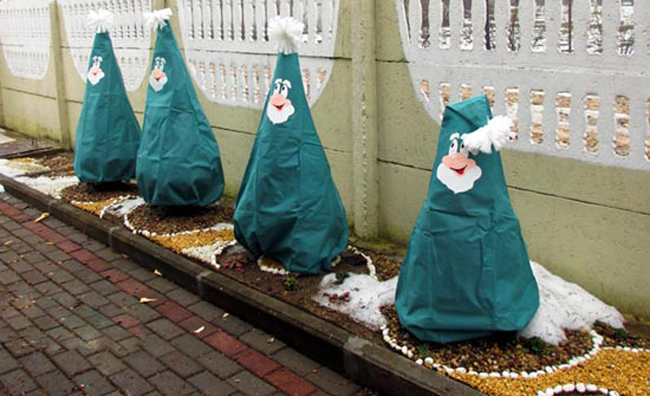
A striking representative of the family of cypress trees is the beauty - thuja. It is considered unpretentious in care, but it requires some preparation for the winter. Incorrect or untimely care in the fall leads to the fact that the tree dies. Experienced gardeners who grow crops even under adverse climatic conditions will share secrets on how to shelter the thaw for the winter.
Content
Do I need to shelter thuja for the winter?
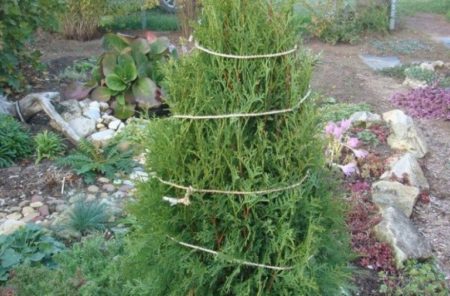
An adult plant aged 5 years and older, even at a temperature of - 30 degrees, does not need shelter. The tree calmly tolerates small frosts, winters well, its low temperature does not scare her at all. Freezing is a threat to young plants. A tree that is not yet 4-5 years old has fragile branches. When the snow covers the branches, they deform, break under the weight.
Another danger to the tree is the winter sun. It is very active, so burns often form on the branches of thuja, needles burn out. Even if direct sunlight does not fall too far on the crown, the needles can suffer from searing. If the preparation of the thuja for the winter was not carried out, then most likely that the following disadvantages will occur on the tree:
- the shoots will be curved and ugly;
- the crown color changes to yellow-green;
- the needles will dry and then fall off.
To prevent an unpleasant outcome and preserve the culture, make shelter for it. During the winter, nothing bad will happen to the thuja, and in the spring and summer it will continue to delight you with its attractive appearance and decorate your summer cottage.
How to cover a thuja
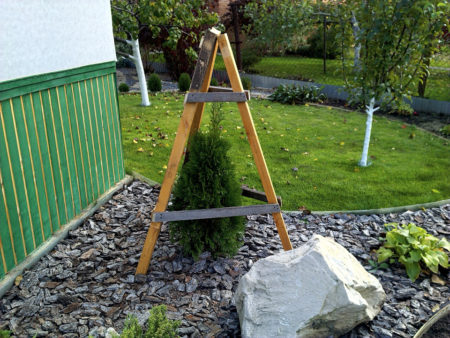
Thuja shelter for the winter is a simple process, but a little painstaking, as accuracy will be required. To begin with, twine the tree branches with thick twine. Do not pull the twine too tight, otherwise the branches will be hard. It is enough to fix the crown so that the snow could not lie on the branches. Gather the branches up to the center of the tree, and then begin to tie in a circle. Start the process from the base of the tree and gradually move to the top.
If in your region with the onset of winter heavy snowfalls, it makes sense to build a frame. It is necessary next to the culture to drive 3 pins made of metal or wood into the ground. They should intersect at one point - above the top of the tree. Then wrap the frame with cover material that allows air to pass through. Be sure to fasten the material to the frame so that it is not blown away by a gust of wind. Tie it with twine, for example.
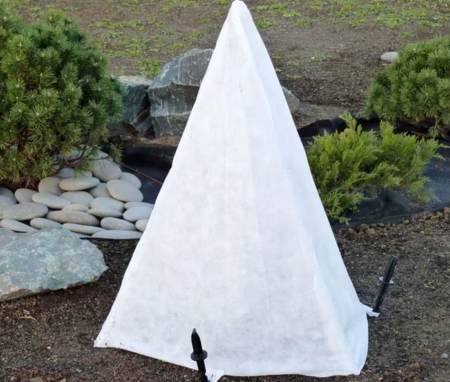
In stores where a large selection of garden tools is presented, sometimes there are special covers for plants on sale. Get them, they are convenient to use and will last you more than a dozen years. You just need to put on the cover and spread it on the thuja, then the plant will stand wonderfully all winter, until the beginning of spring. In the spring, remove the cover, wash and dry it, you will not need it until the fall.
Another way to shelter is to install a sun screen. It can be a wooden box or a homemade device. Drive the pegs into the ground parallel to each other. Place the roof between the pegs with roofing material, a special sunscreen. Such a shelter will prevent the needles from burning out even in spring, when the sun is very active.
 You may be interested in:
You may be interested in:To save thaw in the winter, use a few practical tips:
- annual and biennial trees are covered first of all, even before the snow falls;
- if there is a lot of snow during the winter, remove it from the shelter;
- Shelter can be removed after the snow begins to melt.
It is more convenient to cover a tree with two or three. Ask a member of your family to help you, and you can do it in just a few minutes.
Root warming
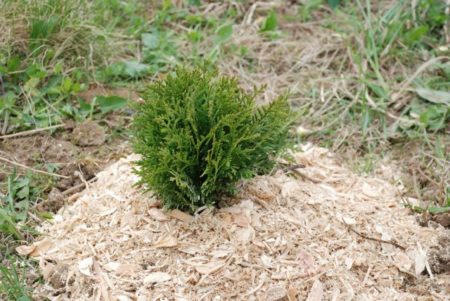
In addition to keeping the crown warm and against sun protection, you need to consider how to insulate the root system. The roots of young plants are exposed to frost, and it itself will quickly die if the roots are frozen. To warm the root system are suitable:
- peat or any other organic component. The main condition is that the mulch must have a loose layer;
- a mixture of fallen autumn foliage with earth or humus. In addition to protection from colds, such a mixture will over time become an excellent fertilizer for the root system;
- sawdust, straw.
The thickness of the mulch layer should be at least 5 cm, but not more than 10 cm. The mulch is placed near the tree trunk circle, and the lapotnik is laid on top of it. It will protect the root system from rodents and crush the mulch.
How to choose a cover material
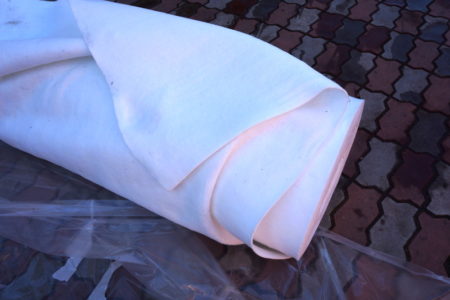
The material for sheltering thuja choose depending on its capacity, it should be high and allow air to penetrate inside. It is strictly forbidden to take material that does not allow air to pass through, for example, cellophane film. Under it, a greenhouse effect will develop, as a result of which the tree will begin to whirl, drop needles and become ill. The best material for winter shelter steel:
- spanbond;
- lutrasil;
- agricultural span;
- agrotherm;
- craft;
- sackcloth;
- gauze.
Choose material with a white color, in addition to heat, it will reflect the sun's rays from the tree, thereby the needles will not “burn”. Therefore, if you chose a black roofing material for shelter, wrap a white sheet or duvet cover over it.
How to keep thuja in a pot
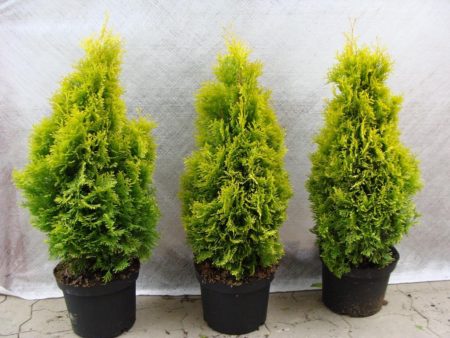
If your thuja is still small, then it probably still sits in a pot. Then there will be no problems with shelter, just with the onset of severe cold, remove the tree from the street in a cool room, put the pot with the plant in the basement, cellar or take it out to the glazed balcony. The optimal temperature range for wintering thuja is considered to be a temperature of 4 to 10 degrees Celsius. Check that there is not a lot of humidity in the room, and spill the plant itself well and wrap it with kraft paper. It is desirable that the room had a light source, for example, a small window. You can rearrange the thuja for the winter in a cool room, but just keep the plant away from heating radiators and open the window for fresh air.
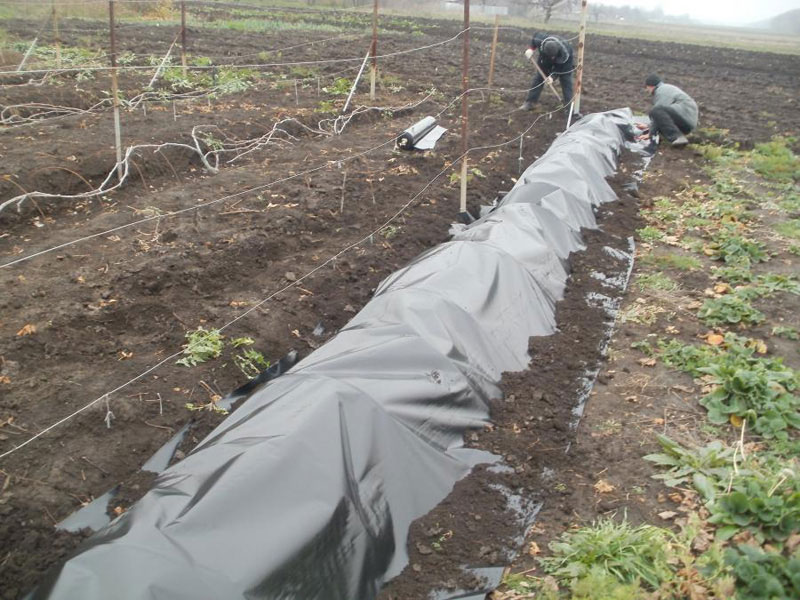 You may be interested in:
You may be interested in:When is the best time to shelter
It is necessary to close a tree for the winter in different regions in different ways. It depends on the onset of cold weather in a particular region, on the duration of winter and on its average temperature. So, in the southern strip, the tree does not have to be sheltered for the winter. It grows quietly both in the summer cottage and in the forest. But for other regions, in order to preserve thaw in the winter, you need to make a little effort.
Middle lane
Cooling in the middle lane begins in late October or early November. At this time, when there is still no snow, a 5-centimeter layer of mulch is laid near the tree trunk circle, covered with spruce branches and left the culture to winter. Around the second part of winter, from the end of January, sun-reflecting screens are installed next to the tree to protect the needles.It is not necessary to wrap the crown with agrofiber, since the temperature in the Middle lane rarely drops below +20 degrees, and overheating is dangerous for a tree.
Volga region
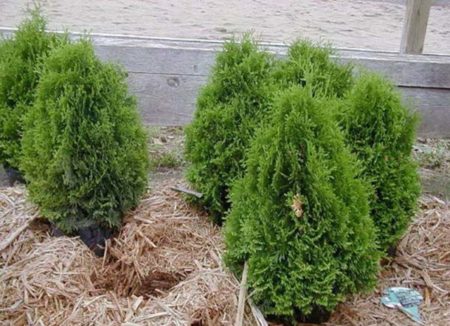
Winter comes to the Volga region at the end of autumn, so from the end of October you can start winter preparations. For the Volga region, as well as for the Middle lane, only mulch is laid on wintering days. The layer can be put thicker, its height will be about 10 cm. Only young trees can be hidden from the cold. Take a 5 liter plastic bottle, cut off the bottom of it and cover it with wood. To prevent plastic from missing color, wrap it in a white pillowcase. If your thuja is more than 4 years old, then do not wrap it up for the winter, it will stand wonderfully and so on.
Ural and Siberia
In the northern part of the country, winter comes very early, literally in the middle of October, so the preparations begin earlier than in the central part of Russia. First, the soil is mulched with a layer of peat or sawdust 10 cm thick. Fir branches are placed on top of the mulch. Then, a cone-shaped wire frame is made. Agrofibre or any protective material is pulled onto the wire, fixed on top with twine so that it does not fly off. In addition to the wire frame, you can wrap the thawed spunbond. Shelter from a tree is removed in Siberia not earlier than mid-March, since frost lasts long in the region.
Types of Common Errors
Inexperienced gardeners, who have never encountered growing a crop, immediately make many oversights. As a result, the tree does not tolerate them and eventually either dries out or decays. Here are the options for the most common mistakes from agricultural practice:
- for the winter, the crowns of young trees are left uncovered;
- use fertilizers that are designed for deciduous trees (nitrogen complexes);
- Do not cover the needles with sunscreens;
- cover too early.
An important step in the development of a tree is the formation of a crown. If it is incorrectly laid, then the plant immediately loses its appearance. Therefore, after the shelter is removed, the thuja must be cut off. For pruning, take a pruner, it is convenient for them to work. First of all, remove dry and diseased branches with yellow needles from the top and middle of the tree, they are already dead. If the crown is excessively thick, discharge it slightly. This will increase the breathability of the tree, as well as reduce the risk of attacking the pest culture. So that your thuja grows better not up, but in width, cut off part of the top, trimming the top helps stimulate the side shoots, they are activated. There are 3 types of trimming thuja:
- spiral. The most common form for trimming thuja. in general, the tree resembles a large cone, its top will be narrowed;
- spherical. The option is suitable for the formation of low crowns. The plant looks great on a summer cottage, in a winter garden;
- topiary. The crown is formed in the form of any geometric shape: a rhombus, square, ball. In garden stores metal frames are sold for laying the crown, according to which they subsequently trim.
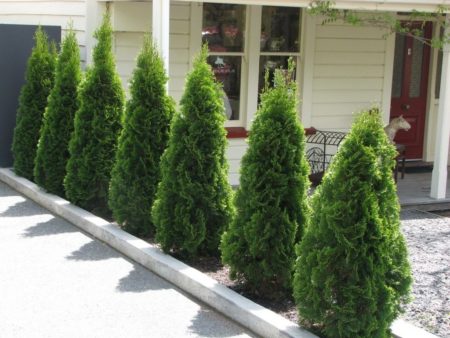
Thuja will be the main decoration of your local area, if you will take care of her properly: Cover from the cold outside, trim the crown, water regularly. A healthy and beautiful tree pleases the eye and attracts the attention of everyone around. Thuja is able to live for decades, no matter in which region you planted it, so if you like evergreens, the choice for planting is obvious.

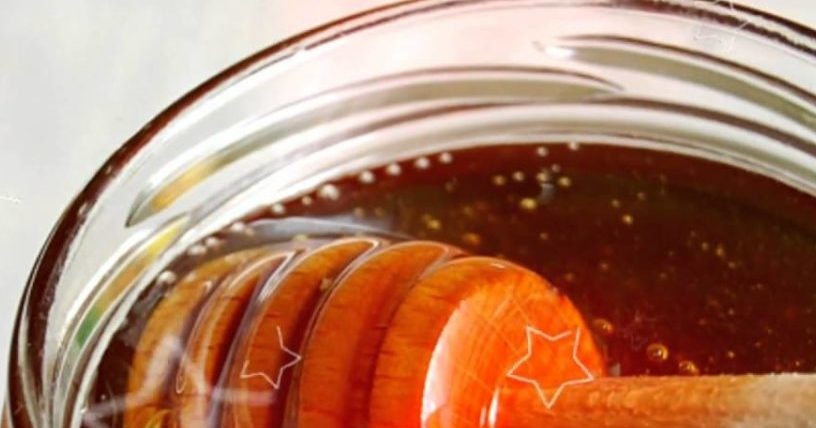
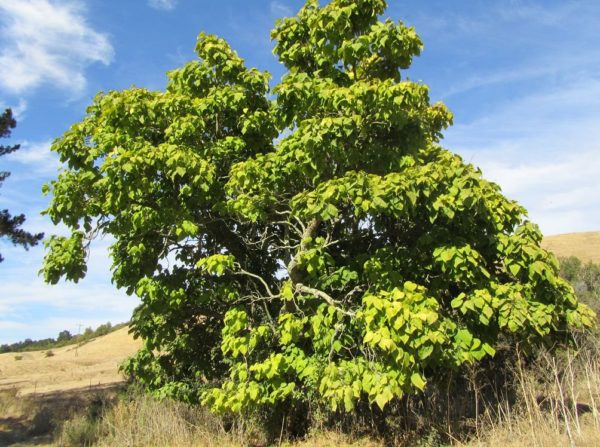
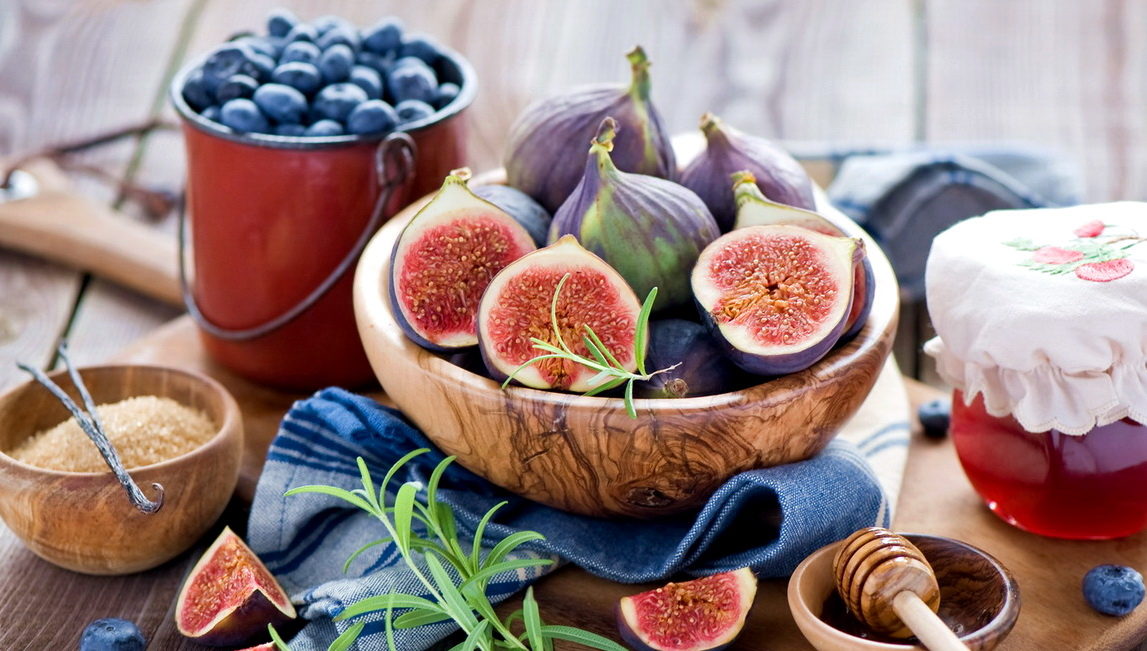
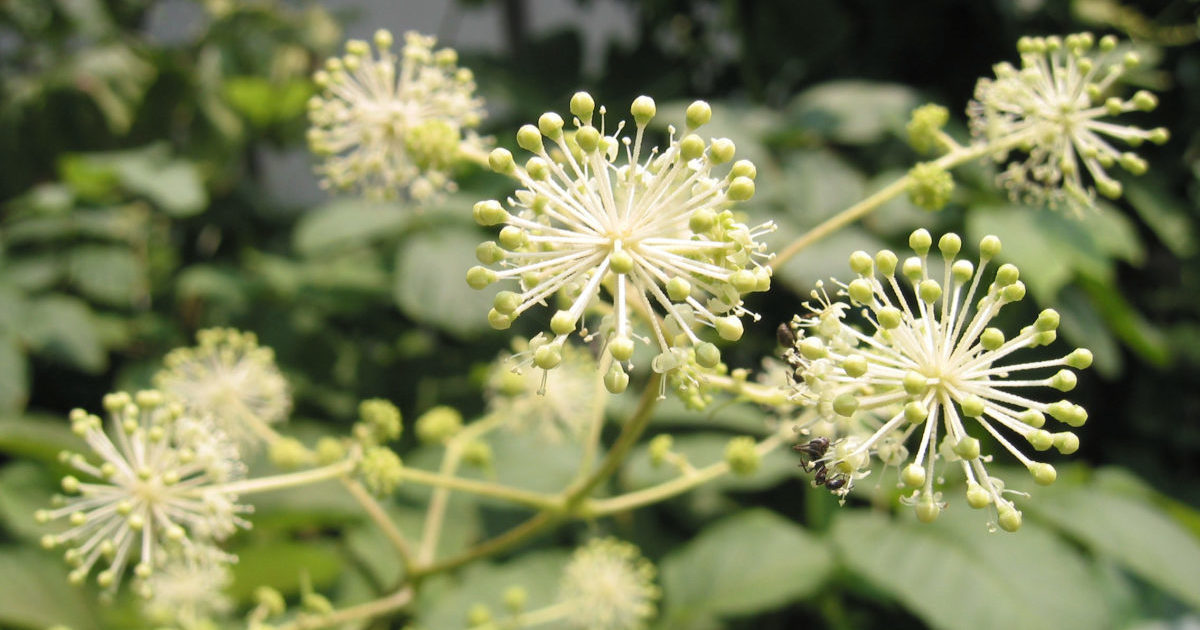 Aralia Manchurian - medicinal properties and contraindications, the use of tinctures in bodybuilding
Aralia Manchurian - medicinal properties and contraindications, the use of tinctures in bodybuilding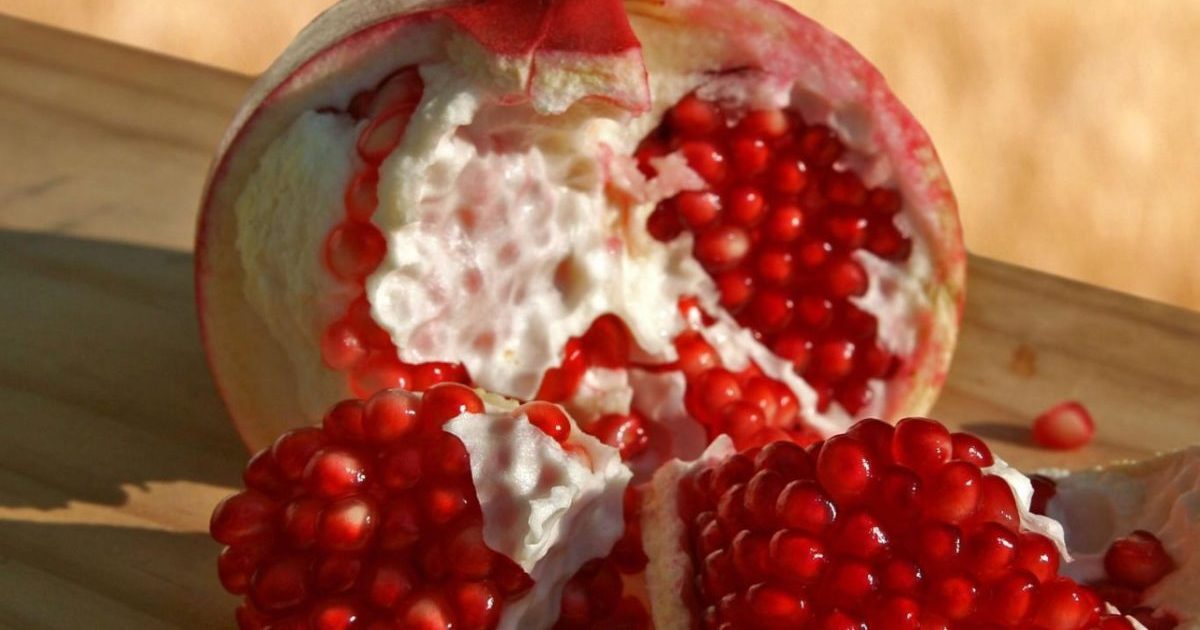 Seedless pomegranate - cutaway appearance, benefits and harms
Seedless pomegranate - cutaway appearance, benefits and harms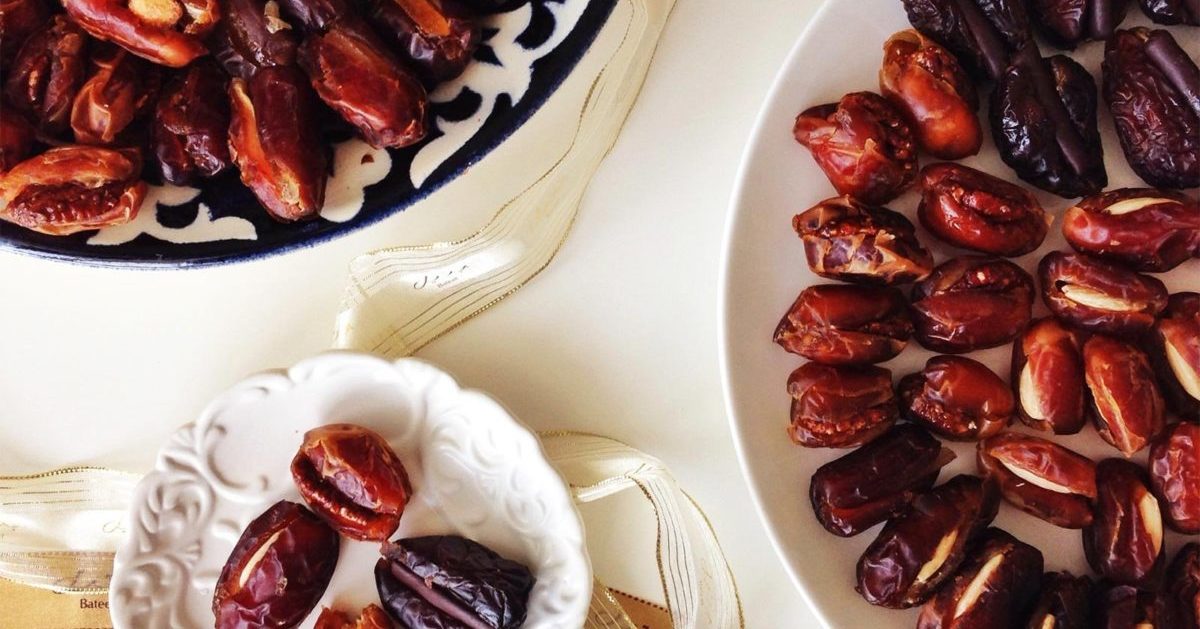 Dates - the benefits and harm to the body, how much you need to eat, properties and calorie content
Dates - the benefits and harm to the body, how much you need to eat, properties and calorie content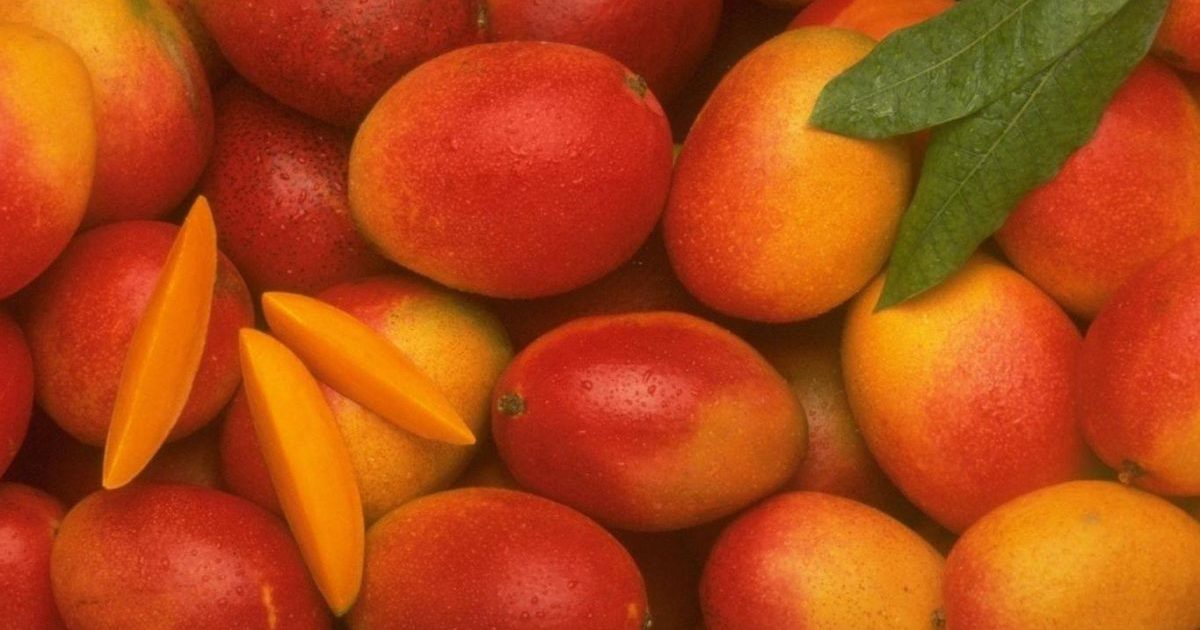 The benefits and harms of mango for the body of women and men - how to eat it?
The benefits and harms of mango for the body of women and men - how to eat it?